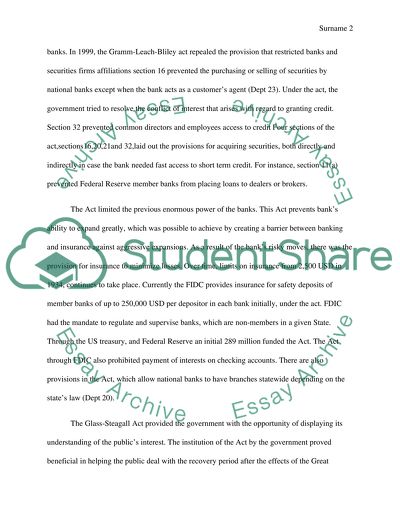Cite this document
(“Banking Act of 1933 Glass-Steagall Act Article Example | Topics and Well Written Essays - 1000 words”, n.d.)
Retrieved from https://studentshare.org/history/1455718-banking-act-of-1933-glass-steagall-act
Retrieved from https://studentshare.org/history/1455718-banking-act-of-1933-glass-steagall-act
(Banking Act of 1933 Glass-Steagall Act Article Example | Topics and Well Written Essays - 1000 Words)
https://studentshare.org/history/1455718-banking-act-of-1933-glass-steagall-act.
https://studentshare.org/history/1455718-banking-act-of-1933-glass-steagall-act.
“Banking Act of 1933 Glass-Steagall Act Article Example | Topics and Well Written Essays - 1000 Words”, n.d. https://studentshare.org/history/1455718-banking-act-of-1933-glass-steagall-act.


